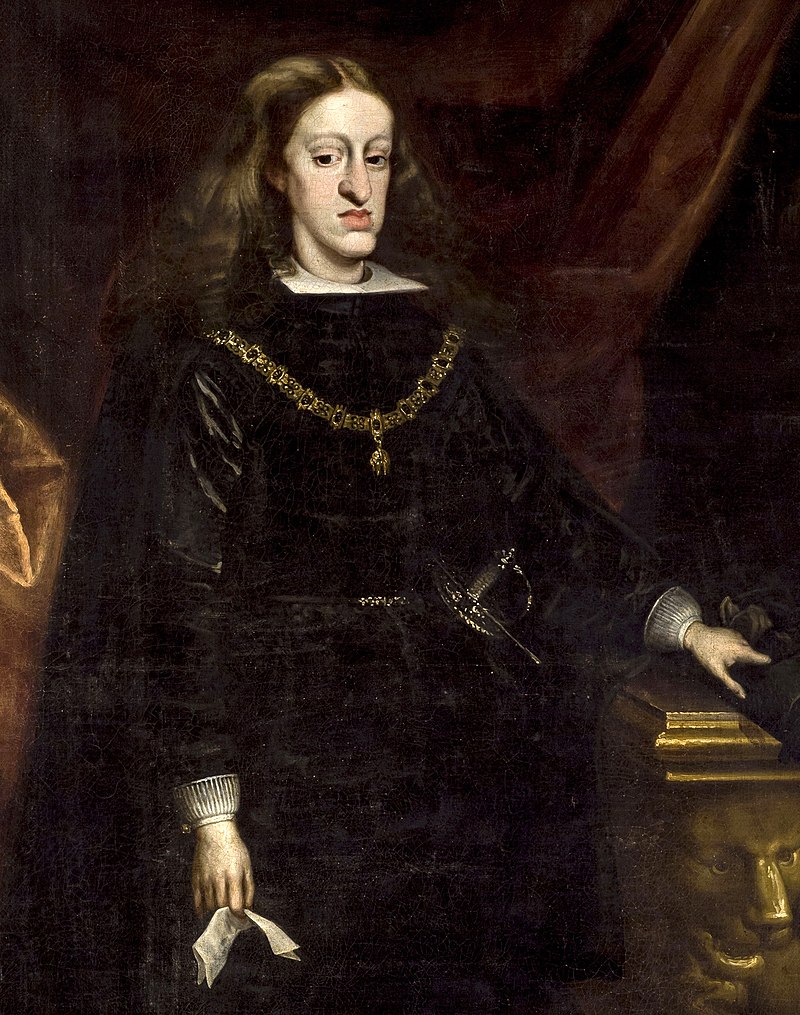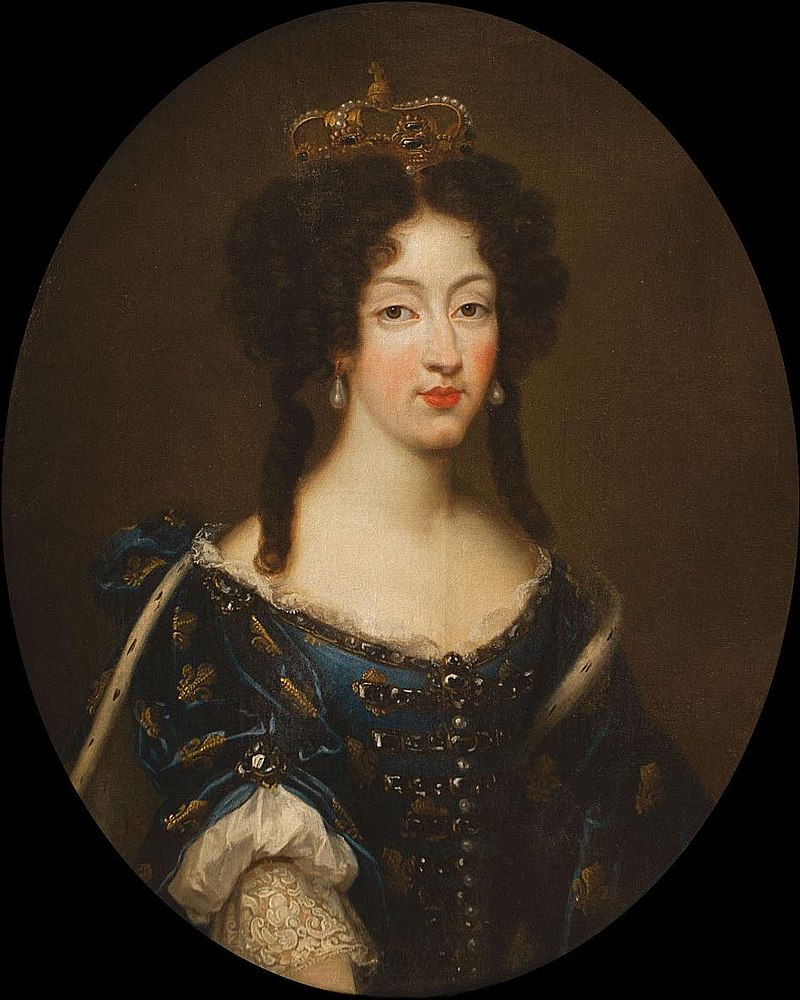Nowadays people, at least in the Western world, tend to marry when they are in love and do so on an unpressured basis. Throughout history it hasn’t always been like that and although marriage was seen as a tool to increase, or preserve wealth and power, it was often brought to extremes by powerful dynasties. One of the most powerful and influential families of European history was the House of Habsburg. As a matter of fact, the House is the embodiment of what can happen if you properly play your marriage politics. The house’s power expansion started with a Swiss count, only to end up ruling over seven countries as monarchs. This was achieved by practicing cunning and practical marriage politics and always marrying up the ‘power-ladder’.
But this is also where we get to the issue of the whole situation. Perhaps some of you have already thought of this – but within a few generations of upward-mobility-marriage… well… who are you going to marry? If your family is the embodiment of power in Europe and no other family can even compete, then any marriage with other royal families will only net you losing control. And if, for example, your children marry into another family, why would the other family not practice the same marriage-politics that you practised to get on top and erode your power-base? And, well, yeah. You guessed it. The Habsburgs did what other royal families had figured out as well: they decided to marry each other to maintain their power base. And for multiple generations Habsburgs married their first- or second cousins. The thing is, nature has a system to prevent this type of inbreeding. And within several generations, the Habsburgs started to experience the effects of marrying within their bloodline.
Inbreeding tends to have some very disturbing genetic effects on offspring, and multiple generations of Habsburgs already suffered from this. But the man that really got the worst end of the stick and was more or less the embodiment of the effects was Charles II, King of Spain. Now as for Habsburg influence in Spain, due to a fortunate chain of events since the early 16th century, the Swiss Habsburgs provided its king. And the Spanish Habsburg line was notorious for their inbreeding. They frequently married close relatives such as uncle-niece, first cousins and if you look at their family tree, you will see that it often loops back into itself. Charles’ father, Philip IV and his mother, Marianna were uncle and niece, and their grandparents, Charles’ great-grandparents, were all descendants of the same 2 people: Joanna and Philip of Castille.

So, well, it is quite the understatement to say Charles had some inferior genes. This section of a biography sums it up quite well:
The Habsburg King Carlos II of Spain was sadly degenerated with an enormous misshapen head. His Habsburg jaw stood so much out that his two rows of teeth could not meet; he was unable to chew. His tongue was so large that he was barely able to speak. His intellect was similarly disabled. His brief life consisted chiefly of a passage from prolonged infancy to premature senility. Carlos’ family was anxious only to prolong his days and thought little about his education, so that he could barely read or write. He had been fed by wet nurses until the age of 5 or 6 and was not allowed to walk until almost fully grown. Even then, he was unable to walk properly, because his legs would not support him and he fell several times. His body remained that of an invalid child. The nature of his upbringing, the inadequacy of his education, the stiff etiquette of his court, his dependence upon his mother and his superstition helped to create a mentally retarded and hypersensitive monarch.
It’s an incredibly sad description but the paintings of Charles really do show a man that isn’t entirely… 100%. He had the traditional Habsburg features such as the long jaw, flattened face and turned-down nose, but all these features were brought to the extreme in his being.
When Charles was 4 years old his father passed away and he became King. Obviously he couldn’t rule himself, certainly not at that age, so his mother became his regent. Due to his weak body and mind his tutors thought it irresponsible to educate him, so the boy wasn’t properly educated at all. It was terrible to the degree that he wasn’t even taught to keep himself clean, and he became notorious for his lack of hygiene. Contemporary descriptions state his stench was unbearable and his hair was unwashed. He walked around in a state of permanent filth. And as he grew older his underbite got worse, and he couldn’t even chew any food, not to mention the drooling.

As Charles turned 14 he could now legally rule the Kingdom by himself, but obviously he was in no capacity to do so. His mother, the queen-regent, continued her regency, something that didn’t sit well with the only son out of wedlock Charles’ father had recognised, John of Austria the Younger. With ever-increasing tensions at court and rising debt of the Habsburg crown, John launched a palace coup against the queen-regent in 1677. He now took control of the country, but ‘setting things straight’ proved much more complicated than he had probably expected.
To begin with, Spain had many overseas colonies, but the gold and silver flowing in from the new world led to reckless spending and thus rapid inflation, rendering Spanish currency devalued. Furthermore, the domestic political infrastructure was chaotic. Spain was nothing more than a patchwork of barons and counts, a bit like the Holy Roman Empire. Now, perhaps John could have made progress in this department, was it not for him dying two years after taking power. Charles wasn’t up to the task to rule so a marriage was arranged for him. He married the French Marie Louise D’Orléans. Now, the girl was appalled at the thought of marrying him and is said to have spent most of the time weeping. A very long sad story short: the marriage remained childless and due to strict Spanish court customs and the mental infirmity of Charles, Marie remained a very lonely and depressed woman. That is not to say Charles didn’t love her, because he certainly did and throughout the entire marriage he would. 10 years after the wedding, in 1689, the depressed Marie fell off a horse and passed away.

Charles and Marie’s marriage remained childless, however, so another wedding was arranged. After all, a successor to the throne was necessary. Charles now married the pro-Austrian Maria Anna of Neuburg. Still, this marriage too remained childless with many concluding that Charles must be infertile. The last decades of Charles’ life were subject to constant war with France over Spanish possessions in the Netherlands and court intrigues between pro-Austrian and pro-French factions. And over the years Charles’ health deteriorated. Contemporaries had expected Charles to die very young, but to many surprise he managed to survive his 20s. Yet by 35 it was apparent his already minimal physical and mental capabilities were deteriorating.
The last years of his life were marked by ‘acts of madness’. He died at the age of 39. Following his death, a doctor performed an autopsy on him and he found the following:
the king’s body, “Did not contain a single drop of blood; his heart was the size of a peppercorn; his lungs corroded; his intestines rotten and gangrenous; he had a single testicle, black as coal, and his head was full of water.”
It is the incredibly sad life story of Charles II, the unfortunate product of the Habsburg mission to try and keep power within their family. Ironically, because of Charles’ disabilities, following his death the War of the Spanish Succession broke out. Charles had named Philip, the grandson of the French King, as his successor. This would establish a massive power base for the French in south-western Europe, leading to the Netherlands, England and the Holy Roman Empire to wage war against Bourbon Spain and France. In essence, Charles’ death led to the decline and removal of Habsburgs ruling over Spain.
Oh and as for Charles second wife, Maria Anna, she was exiled to Toledo after his death. She was deported to France in 1706 and lived there until 1739. She died in 1740, one year after returning to, and living quietly in Spain. Basically the life story of Charles is a sombre one and only has losing sides for those directly involved. Not to mention the shocking anatomy of the man.

